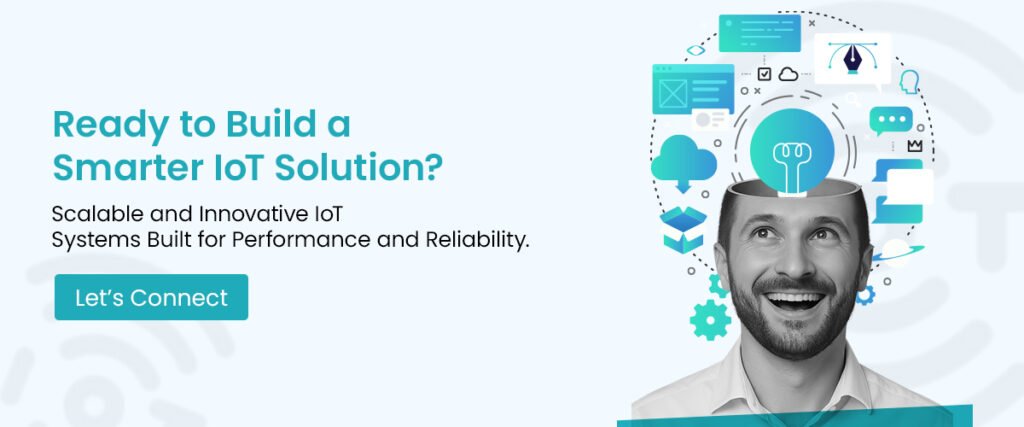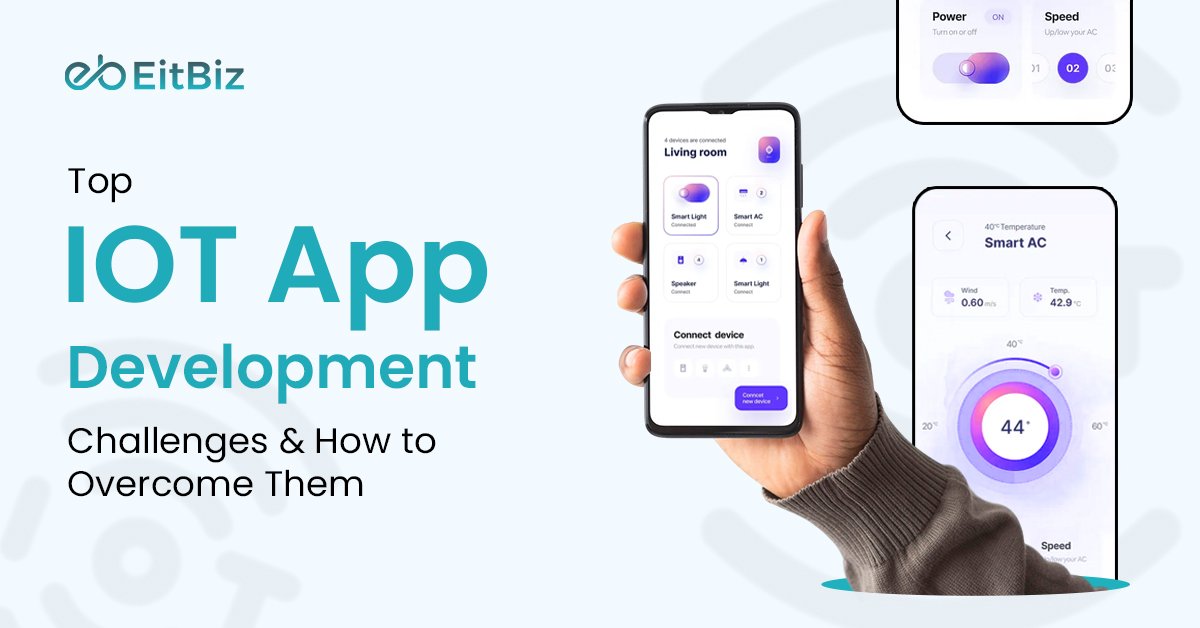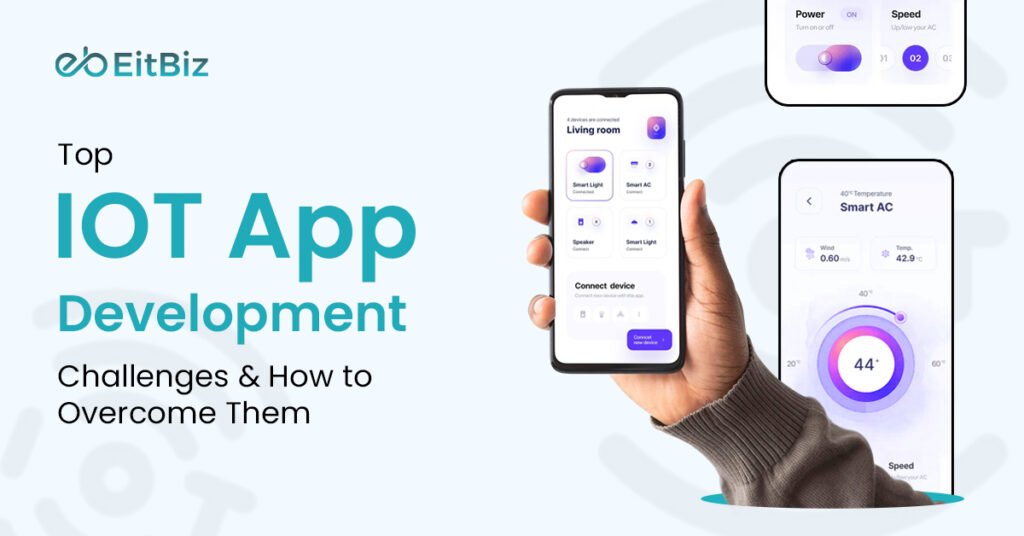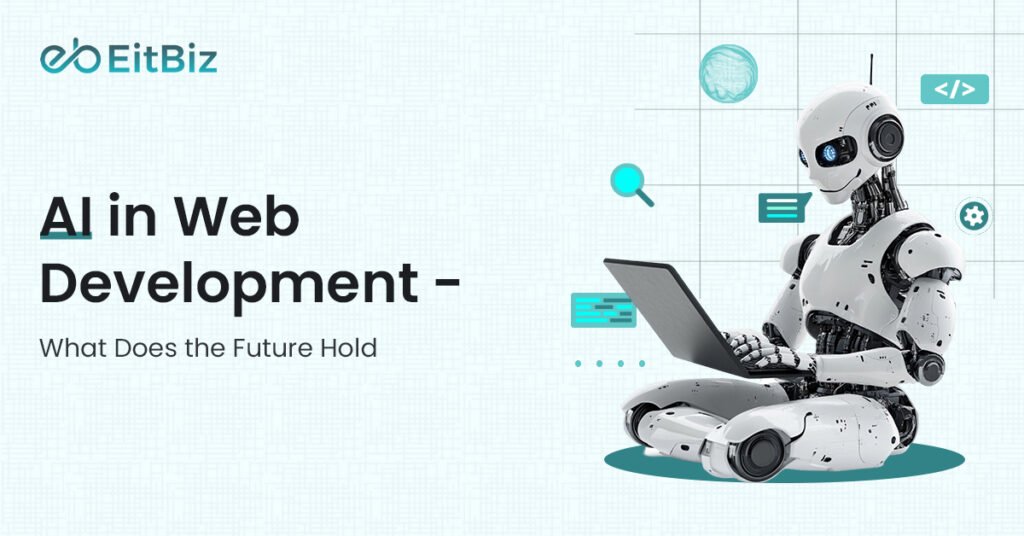Have you ever wondered why so many IoT projects never make it past the pilot stage?
The Internet of Things (IoT) promises to connect everything, from home appliances and cars to industrial machines and smart cities. Yet, despite its potential, developing a reliable and secure IoT app isn’t easy.
Developers, startups, and enterprises face a series of IoT app development challenges that can stall innovation, delay launches, or even cause product failures. Connectivity, security, scalability, and data integration are all issues that can become serious obstacles if not managed correctly.
In this blog, we’ll explore the most common IoT development challenges, why they happen, and how you can effectively overcome IoT challenges with practical, professional strategies.
| Table Of Contents: 1. Understanding IoT App Development 2. What are the Top IoT App Development Challenges? Final Thoughts |
Understanding IoT App Development
IoT app development involves connecting hardware devices, cloud services, and user interfaces into one synchronized ecosystem.
A successful IoT solution must handle continuous data flow, ensure security, and maintain seamless performance.
In practice, that means dealing with:
- Different communication protocols
- Device compatibility
- Security vulnerabilities
- Network stability
- Real-time data processing
When one link in this chain fails, the entire system suffers. That’s why understanding and solving IoT app development problems early can determine the success or failure of your project.
What are the Top IoT App Development Challenges?
1. Security and Privacy Risks
Security remains one of the biggest IoT app development challenges. Every connected device is a potential entry point for cyberattacks. Many IoT devices have limited processing power, making it hard to implement advanced encryption or authentication features.
If security is not prioritized from the start, users’ personal data, business operations, and even physical assets can be at risk.
How to Overcome It?
To overcome IoT challenges related to security:
- Implement end-to-end encryption across all communication channels.
- Use secure boot mechanisms and regular firmware updates.
- Apply multi-factor authentication for users and devices.
- Conduct regular penetration testing and vulnerability scans.
Security should never be an afterthought. It must be a continuous process throughout the lifecycle of IoT app development.
2. Connectivity and Network Reliability
Connectivity issues are another major IoT application development issue. IoT devices depend on stable, low-latency communication between sensors, cloud servers, and user applications. Inconsistent network performance can lead to delayed data transfer, lost packets, or inaccurate readings.
This becomes even more challenging when devices are deployed across different locations using varying network types such as Wi-Fi, Bluetooth, LoRaWAN, or cellular.
How to Overcome It?
Reliable connectivity starts with proper architecture planning.
- Choose the right communication protocol for your use case.
- Build redundancy into the network to handle downtime.
- Use edge computing to process data closer to the source and minimize latency.
- Test network performance under real-world conditions before deployment.
Consistent and predictable data flow ensures better user experience and long-term scalability.
3. Scalability and Device Management
As IoT systems grow, managing hundreds or thousands of devices becomes one of the most demanding IoT app development problems.
Every device must stay connected, updated, and synchronized. Managing firmware updates, performance logs, and device configurations manually is nearly impossible at scale.
How to Overcome It?
To handle scalability efficiently:
- Use cloud-based platforms for centralized monitoring and updates.
- Implement automated device onboarding and provisioning.
- Design modular architectures that can grow without major rework.
- Adopt message brokers like MQTT or AMQP to manage large-scale data exchange.
Scalable infrastructure reduces operational complexity and enables your IoT application to expand as demand grows.

4. Data Management and Integration
Data is at the core of every IoT solution, but handling it effectively is one of the more complex IoT development challenges. IoT systems generate massive volumes of structured and unstructured data. Integrating this data with analytics tools, CRMs, or enterprise systems can quickly become overwhelming.
Without proper data handling, organizations risk losing valuable insights or making poor decisions based on incomplete information.
How to Overcome It?
- Use standardized data formats and APIs for smooth integration.
- Use cloud-based data lakes to securely store large volumes of data.
- Utilize AI or ML algorithms for real-time data analysis and anomaly detection.
- Clean and normalize data regularly to ensure accuracy and consistency.
A well-designed data architecture transforms raw information into actionable intelligence, driving better business outcomes.
{Also Read: IoT App Development: Frameworks and Tips That Work}
5. Hardware and Software Compatibility
IoT ecosystems involve multiple hardware vendors and software platforms. Ensuring compatibility between sensors, gateways, and applications remains a recurring IoT application development issue.
Mismatched hardware specifications or unsupported drivers can cause system instability or data loss. This is especially common when teams integrate legacy devices into modern IoT systems.
How to Overcome It?
- Choose hardware components that support open standards and APIs.
- Test software-hardware communication early during development.
- Use firmware abstraction layers to isolate hardware dependencies.
- Partner with experienced IoT hardware manufacturers.
Cross-compatibility improves system stability, reduces maintenance costs, and ensures smoother deployment.
6. High Development Costs
Building a reliable IoT application requires significant investment in hardware, software, and infrastructure. Testing, security certifications, and cloud integration all contribute to rising costs.
This financial burden is one of the biggest IoT app development challenges for startups and small businesses trying to scale their solutions.
How to Overcome It?
Cost challenges can be managed through smart planning:
- Begin with a minimum viable product (MVP) before scaling.
- Use open-source IoT platforms where possible.
- Leverage cloud services to reduce infrastructure expenses.
- Outsource development to specialized teams for cost efficiency.
Focusing on lean development ensures faster time to market while minimizing financial risks.
7. Regulatory and Compliance Requirements
Different regions have varying laws regarding data privacy, device communication, and safety standards. Navigating these legal frameworks adds another layer of IoT app development problems.
Failure to comply can lead to penalties, product bans, or reputational damage.
How to Overcome It?
- Stay informed about regional and international IoT regulations.
- Follow standards such as GDPR, HIPAA, or ISO/IEC 30141, where applicable.
- Document data-handling processes for transparency.
- Work with legal consultants who specialize in technology compliance.
Meeting compliance requirements builds credibility and protects your organization from potential legal complications.
8. Energy Efficiency and Power Management
Many IoT devices operate in remote or battery-powered environments. Poor energy optimization can limit their lifespan and increase maintenance costs, another key IoT development challenge.
How to Overcome It?
- Implement low-power communication protocols like Zigbee or BLE.
- Use sleep modes and intelligent scheduling for inactive devices.
- Employ edge processing to reduce unnecessary data transmission.
- Choose energy-efficient hardware components.
Optimizing energy consumption extends device longevity and improves the sustainability of your IoT ecosystem.
9. Limited Skilled Workforce
IoT development requires expertise in multiple areas, including embedded systems, networking, cloud computing, cybersecurity, and data analytics. Many organizations struggle to find professionals with this blend of skills, leading to project delays or inefficiencies.
How to Overcome It?
- Upskill existing development teams through training programs.
- Partner with experienced IoT app development solutions providers.
- Encourage cross-functional collaboration between software and hardware teams.
- Leverage low-code IoT platforms for rapid prototyping.
Access to skilled professionals significantly improves product quality and development speed.
10. Lack of Standardization
The absence of universal IoT standards continues to be one of the pressing IoT application development issues.
Different vendors use proprietary communication protocols, making interoperability difficult. This limits device compatibility and integration flexibility.
How to Overcome It?
- Adopt open-source frameworks and common communication standards.
- Design APIs that enable flexible integrations.
- Participate in IoT consortiums and industry standardization initiatives.
- Prioritize long-term compatibility during architecture design.
Following standardized approaches helps ensure reliability and future-proofing for your IoT ecosystem.
Final Thoughts
So, there you have it! IoT technology continues to reshape industries, but the road to successful implementation is filled with technical and strategic obstacles. Addressing IoT app development challenges requires foresight, expertise, and the right development partner.
From data management to device compatibility and cybersecurity, each IoT application development issue demands careful planning and continuous improvement. With the right approach, these challenges can become opportunities for innovation.
Ready to build secure & scalable IoT solutions? If so, look no further than EitBiz!
We specialize in creating reliable, scalable, and secure IoT solutions that help businesses overcome challenges effectively. Our team focuses on delivering tailored IoT app development solutions that integrate advanced technologies, user-centric design, and strong security standards.
Have an IoT app idea in mind? If so, connect with EitBiz today, and turn your simple idea into a successful, high-performing digital ecosystem.

Vikas Dagar is a seasoned expert in the field of web and mobile applications, boasting over 14 years of experience across a multitude of industries, from nimble startups to expansive enterprises. Visit Linkedin
View all posts




